#soraya tarzi
Text

King Amanullah Khan and Queen Soraya of Afghanistan visiting Oxford-University, England 1928.
#king amanullah khan#amanullah khan#soraya tarzi#queen soraya of afganistan#queen soraya tarzi#queen soraya#oxford university#1928#afghanistan history#history#afganistán#afghan history
4 notes
·
View notes
Text
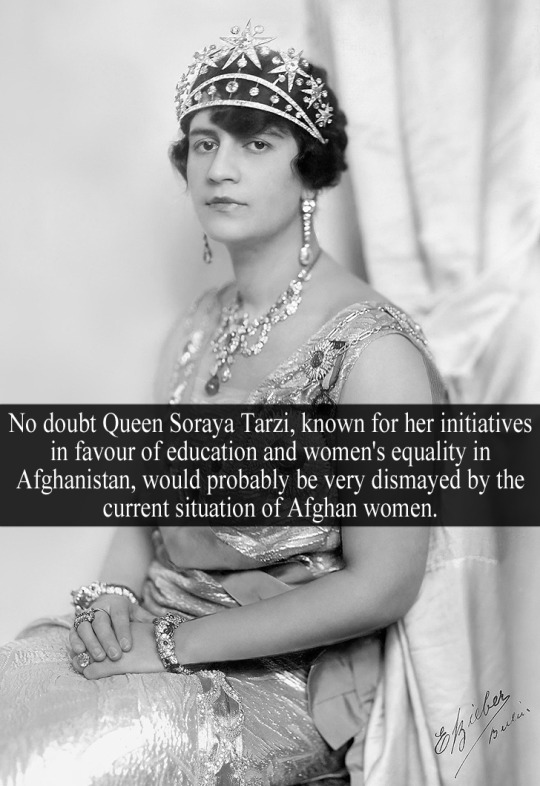
“No doubt Queen Soraya Tarzi, known for her initiatives in favour of education and women's equality in Afghanistan, would probably be very dismayed by the current situation of Afghan women.” - Text & Image Submitted by cenacevedo15
35 notes
·
View notes
Photo










Top Five Women of the 1920s (Gabrielle’s picks) in no particular order
1. Rachel Mary Parsons: engineer and advocate for women’s employment rights, as well as was the founding President of the Women’s Engineering Society.
2. Queen Soraya Tarzi: the unconventional, progressive queen consort of Afghanistan who issued along with her husband a number of sweeping reforms, such as women’s education, which would ultimately lead to their exile.
3. Zelda Fitzgerald: dubbed ‘the first American Flapper’ by her husband, she was a socialite, novelist, painter, and muse who became an icon of the jazz age.
4. Josephine Baker: an entertainer, activist, and later French Resistance agent nicknamed among other things, ‘the black pearl’ and the ‘bronze venus.’
5. Grand Duchess Kira Kirillovna: grand duchess of Russia, who from birth spent her entire life in and out of exile. Upon marriage she became a princess of Prussia, and together with her husband they worked with the underground against the Nazis. She ended up imprisoned at Dachau concentration camp but would survive it.
#perioddramaedit#historyedit#20th century#1920s#rachel mary parsons#soraya tarzi#queen soraya tarzi#zelda fitzgerald#josephine baker#kira krillovna#grand duchess kira#by gabrielle#weloveperioddrama#our edits
1K notes
·
View notes
Photo


This is a colourization I did of Queen Consort Soraya Tarzi of Afghanistan. Soraya was born in 1899 in Damascus, Ottoman Syria to Mahmud Tarzi, a politician, and Asma Rasmiya Khanum, the daughter of a Sheik. She married Prince Amanullah Khan of Afghanistan who became King Amanullah Khan a few years after their marriage. The couple had 10 children. Queen Soraya is noted for her support of women's rights in Afghanistan. She advocated for women's education in Afghanistan. Opening the first school for girls in Kabul. The King and Queen received honorary degrees from Oxford University. In 1929 the King and Queen were exiled following a civil war and settled in Rome, Italy. They lived there till their deaths. The King died in 1960 at age 67 and the Queen died in 1968 at age 60. Their remains were sent back to Afghanistan and they are buried in Jalalabad.
I had to research the medals and decoration. I might be wrong in which colours I chose. I know for certain that the collar and big medal is Order of the Supreme Sun. However I was uncertain of which medal the other one is, but I think just from my research it is Order of The Leader (Nishan-i-Sadari) so that was the colours I used for the colourization.
You can read about her here on Wikipedia: https://en.wikipedia.org/wiki/Soraya_Tarzi
Or here, where I got the original b+w: https://www.arabnews.com/node/1732666/world
0 notes
Photo

Forgotten Women Friday #26
Soraya Tarzi- 1899-1968- Afghanistan
“Queen Among Men”
Soraya was born in 1899 in Damascus, Syria as the daughter of one of Afghanistan’s greatest intellectuals and political figures. When Habibullah Khan became the King of Afghanistan in 1901, he allowed Afghan exiles to return, including the Tarzis, because they promoted modernization. Upon returning, Soraya met the prince of Afghanistan, Amanullah, and they quickly hit it off. In 1913, at the age of fourteen, Soraya married Amanullah, and when Amanullah became King in 1926, Soraya became Queen. Right off the bat, Amanullah Khan and Soraya defied tradition; Soraya was Amanullah’s only wife and Soraya was the first Muslim Queen consort to appear in public with her husband. Soraya did more than just “appear,” she went hunting, rode horses, attended Cabinet meetings, and joined the King at military parades. When war ensued after Amanullah Khan declared independence from Britain, Soraya visited wounded soldiers near battles to give them comfort and witness war first hand. Soraya quickly became one of the most influential women in the world.
When Afghanistan won independence, Amanullah’s government quickly implemented modern reforms like abolishing slavery, forbidding torture, banning child marriage, and making burqas optional. Soraya took an unprecedentedly active role, acting as the Minister of Education to encourage the education of girls, founding the first women’s magazine, and creating an all-female secret service to watch out for abusive men. Although cities in Afghanistan welcomed these modern reforms, rural towns began to revolt. Somewhat blind to the true anger brewing in their own county, Amanullah Khan and Soraya went on a European tour to meet with allies. Unbeknownst to them, the British distributed pictures, possibly altered, of Soraya going veil-less and socializing with foreign men. These images enraged rural Afghans who viewed her actions as a betrayal of the Afghan way of life and culture.
In 1929, Amanullah Khan abdicated to prevent civil war and he and Soraya fled in exile. The two watched in despair as the new leader reversed all of their modern reforms. Amanullah died in 1960 in exile and Soraya followed him eight years leader. However, Soraya was brought great joy by seeing the Afghanistan of the 1960s readopt some of the modern reforms she and her husband had implemented decades before. Upon her death, her body was returned to Afghanistan and she was given a state funeral. Today, she is the only woman mentioned in the list of rulers of Afghanistan and she is remembered for her activism, relentless pursuit of equality for women, and risque fashion sense. According to the Afghan Women’s Writing Project, Soraya, “is meaningful to us today because she was the one who first opened women’s eyes to the need for education. She founded two schools for girls with her own money: Mastorat School and Hasmath School, which later changed its name to Malalai High School. Since Malalai High School was established it has produced thousands of women politicians, poets, writers and leaders, many of whom have worked in government, parliament, civil society, and political parties.”
#Forgotten Women Friday#fwf#history#text#feminism#feminist#true#Soraya#Soraya Tarzi#Afghanistan#Syria#Queen#khan#education#equality#social justice
45 notes
·
View notes
Photo

Soraya Tarzi (1899 – 1968) was also known as Queen Soraya of Afghanistan. Born in Syria, she was educated by her father, who was the Afghan leader and intellectual. Among her many achievements, Queen Soraya encouraged women to get an education and opened the first school for girls in Kabul. She sent 15 young women to Turkey for higher education in 1928. Soraya was very instrumental in enforcing change for women and publicly exhorted them to be active participants in nation building.
Artist: Jason Porath
29 notes
·
View notes
Photo

ab. 1928 Princess Huriya Tarzi, sister of Queen Soraya of Afghanistan (photo by unknown)
(Royal Collection Trust)
217 notes
·
View notes
Text
En hommage à l'Afghanistan qui connaît actuellement des jours sombres 🇦🇫. L’Afghanistan ne fut pas toujours le pays tourmenté et rétrograde qu’il est aujourd’hui. Depuis le début du XXe siècle, il eût des monarques éduqués et éclairés qui œuvrèrent pour l’ancrer dans la modernité. Quelques figures manquantes. Soraya Tarzi (1899-1968) 1ère reine consort de 1919 à 1929.
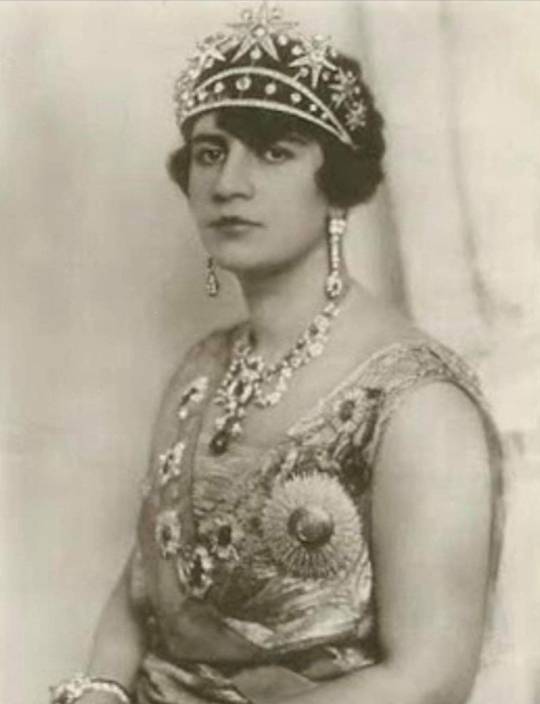
Son père, l'intellectuel et chef afghan Mahmoud Tarzi, lui transmet une solide éducation. Son grand-père, Ghulam Muhammad Tarzi, s'étant opposé à l'émir Abdur Rahman Khan, la famille est déportée sur son ordre en Inde alors britannique ; plus tard, elle s'installe à Damas, alors territoire turc ottoman. À la suite du décès d'Abdur Rahman, elle revient à Kaboul en 1881. En 1912, Soraya Tarzi se marie avec Amanullah Khan, petit-fils d'Abdur Rahman Khan et troisième fils du roi Habibullah Khan. Amanullah devient roi en 1919, après l'assassinat de son père. Elle est, selon la plupart des sources, sa seule femme - Amanullah étant veuf -, ce qui va à l'encontre des traditions de l'époque. En 1928, elle reçoit un prix honoraire de l'université d'Oxford, qui n'est pas seulement honorifique car elle compte alors parmi les femmes les plus influentes de son temps. C'est une reine réformatrice, militante pour les droits et l'éducation des femmes afghanes entre 1921 et 1929, date à laquelle son époux abdique et l'emmène en exil en Inde d'abord, puis en Europe. Elle a notamment créé une école de filles où Eugénie Bazin-Foucher enseigna. Elle décède en 1968 à Rome, Italie. Nadir Shah (1883-1932) roi de 1929 à 1932.
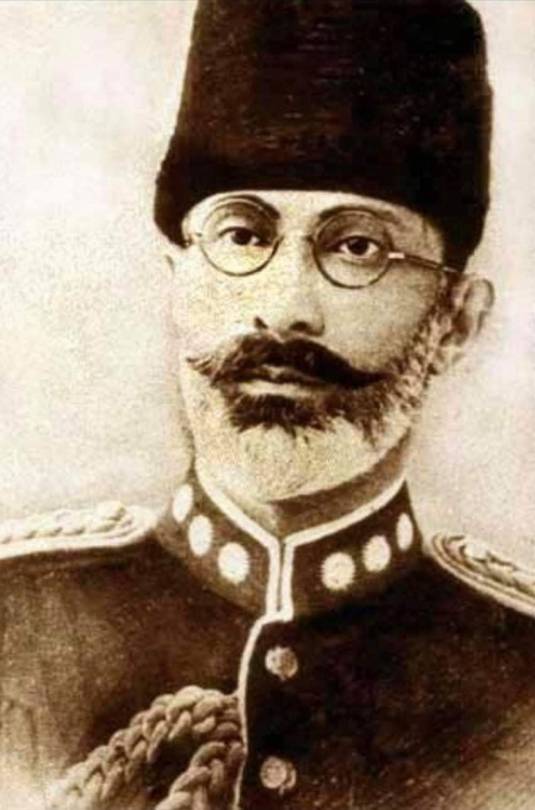
Après une scolarité française et une carrière militaire, il crée le journal Islah qui deviendra l’organe officiel de l’État, puis il est nommé ambassadeur à Paris en 1924. Il accède enfin au trône en 1929 et dirige un gouvernement opposé aux oulémas. Il est assassiné le 8 novembre 1932 et sera commémoré comme « Ala-Hazrat Shahid », le roi martyre. Zaher Shah (1914-2007) roi de 1933 à 1973.

Comme son père, il suit un parcours académique français à Kaboul, puis à Paris. Après son accession au trône, il fait adhérer l’Afghanistan à la Société des Nations en 1934. En 1959, il encourage la scolarisation et l’émancipation des femmes et en particulier leur donne le droit de ne pas porter le voile. En 1964, il fait élaborer une nouvelle constitution qui transforme la monarchie constitutionnelle de 1931 en monarchie parlementaire inspirée de la constitution de la Ve République française. Le 17 Juillet 1973, il est déposé par son cousin l’ancien Premier ministre, Mohammad Daoud Khan, pendant qu’il est en voyage en Europe. Il abdique pour éviter le bain de sang le 24 août 1973. Entre 1963 et le coup d’État de 1973, eût lieu la « période constitutionnelle ». La liberté de parole devient une réalité et des partis d’opposition sont créés, en particulier des partis communistes et islamistes. Le roi vit en exil à Rome jusqu’à la chute des talibans en 2001, chute à laquelle il a puissamment contribué en fédérant tous les opposants. Il retourne en Afghanistan en 2002, refuse la couronne et se voit décerner le titre officiel de Père de la Nation le 15 juin 2002 et continue à exercer une influence évidente mais discrète sur la vie politique. Il meurt aimé et respecté le 23 juillet 2007 à Kaboul. Humaira Bégum (1918-2002) reine consort de 1933 à 1973.
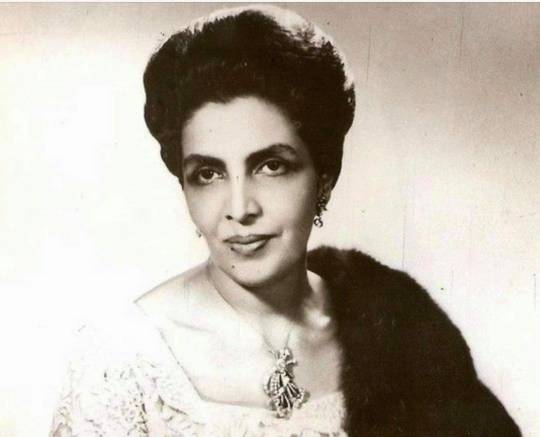
Humaira est la fille du sardar Ahmad Shah Khan, ministre de la Cour et de sa première épouse Zarin Begum (elle-même fille du sardar Khushdel Khan Loynab et cousine du roi Amanullah Khan). Elle est issue de la branche des sardars princes-régnants de Peshawar et Kohat (régions appartenant à l'Afghanistan jusqu'au milieu du XIXème siècle) de la dynastie des Mohammadzai (appelée aussi Barakzai), comme le roi Mohammad Zaher Shah (son époux). Le 7 novembre 1931, elle épouse dans le palais royal son cousin germain (fils de sa tante paternelle), Mohammad Zaher Shah, alors prince-héritier. Le 8 novembre 1933, son beau-père, le roi Mohammad Nadir Shah, est assassiné par un jeune étudiant. Ainsi, son mari accède au trône sous le nom de « S. M. le roi Mohammad Zaher Shah ». Femme active, elle suit de près les réformes sociales et les activités de l'association des femmes afghanes. Elle est la mère de deux filles et six fils, dont l'aîné meurt à l'adolescence. Elle accompagne son époux lors des voyages officiels. Elle est décorée de l'ordre suprême d'Afghanistan « Almar-e-Ala » et de l'ordre de la Couronne précieuse du Japon. Le 17 juillet 1973, alors que le roi est en déplacement, leur cousin et beau-frère Mohammad Daoud Khan fait un coup d'État il renverse la monarchie et instaure la République. La reine et les siens sont dans un premier temps emprisonnés dans leurs appartements royaux, avant d'être exilés à Rome auprès du roi. En 2002, alors que l'Afghanistan retrouve la paix après des décennies de guerre, son époux, l'ancien roi, retourne en Afghanistan pour assister à l'instauration de la démocratie dans son ancien royaume. L'ancienne reine meurt peu de temps après à Rome le 26 juin 2002. Son corps est rapatrié dans son pays pour y être enterré auprès des siens, à Kaboul, au Tapa-e-Maranjan ». Le reste de l’histoire rude et tourmentée de ce pays et le rôle dévastateur de certaines superpuissances est connu de tous. Paix soit sur l’Afghanistan, aujourd’hui soumis à la cruauté et à la sauvagerie médiévale.
8 notes
·
View notes
Text
Afghan is beautiful

I am a half Afghan woman. An Afghan-European American. An Afghan American.
Admittedly, it took me awhile to offer up this information in the aftermath of 9/11 when Afghanistan became synonymous with terrorism in the eyes of many Americans. Taking pride in my heritage suddenly and painfully became controversial.

People didn’t know about my Afghan-ness though because I had my mother’s surname and not my Pashtun father’s: Hotaki. Also, I didn’t wear any kind of head covering because I was raised Catholic. It was easy to hide and pass for completely White.
My late father, an aspiring doctor and med school student who spoke six languages, left Kabul with his family before the Soviet Invasion of Afghanistan as a child. They were the lucky ones. He spent most of his life in Germany where many Afghans have sought refuge. One of my fondest memories is flying kites with him and my Irish-Swedish-French American mother in the Munich Public Gardens as a child. There was no wind that day and we dragged the kites in dizzy circles…laughing together...just as I imagine him now when he was a boy: kite flying in the streets of Kabul.
Since my father died when I was six, I returned to my mother’s hometown of Boston with her in 1996. I was later left to contemplate what it meant to be Afghan in a place with very few Afghans compared to Virginia, California, and New York. In college, as an Asian Studies major at Wellesley College and later at the University of California, Berkeley, I often corrected people who said that Afghanistan is in the Middle East and not in South-Central Asia. I wondered why it seemed that no one had received much education on this country’s history or people outside of reading the popular Khaled Hosseini novel, The Kite Runner, especially since we have been at war—fighting together with the Afghan forces against the Taliban in the longest war in American history.
Many Americans don’t realize that the attackers on 9/11 were not Afghan. The attackers did seek a hiding and meeting place in Afghanistan, however. But those facts shouldn’t matter. Because it doesn’t matter what ethnicity, race, or nationality someone is if they commit a crime and it doesn’t matter where they were hiding. The guilty party does not represent all people of their background or country just like Hitler does not represent all Germans or all of Germany and El Chapo does not represent Mexico or all Mexicans. Similarly, the latest mass shooter in El Paso doesn’t represent all white American men.
After former President Trump pondered out loud the mere possibility of a concocted plan to kill 10 million Afghans and wipe the country off the face of the earth – presumably through the use of nuclear weapons – I have thought more about what it means to be Afghan American today. And it’s not because of those unimaginably cruel musings which add insult to injury in the homes of all Afghans traumatized by decades of war. Indeed, nearly every person who is not a white man has been made to feel worthless, subhuman and criminal under the rhetoric of the former Trump administration...so Afghans are not alone.
But Afghans were alone in the discussion of their genocide in 2019. I have contemplated my identity even more because not one leader or politician in America of any background spoke out formally against those disturbing statements. (And it doesn’t matter if this was an actual plan of his or just an imaginary scenario dangling in the recesses of his mind.) What does the national silence mean?
After 9/11, Afghan American author of West of Kabul, East of New York and Destiny Disrupted, Tamim Ansary, went viral with an email he sent. In it, he wrote:
“The Taliban and Bin Laden are not Afghanistan. They’re not even the government of Afghanistan. The Taliban are a cult of ignorant psychotics who captured Afghanistan in 1997 and have been holding the country in bondage ever since. Bin Laden is a political criminal with a master plan. When you think Taliban, think Nazis. When you think Bin Laden, think Hitler. And when you think “the people of Afghanistan” think “the Jews in the concentration camps.” It’s not only that the Afghan people had nothing to do with this atrocity, they were the first victims of the perpetrators. They would love for someone to eliminate the Taliban and clear out the rats nest of international thugs holed up in their country. I guarantee it…Some say, if that’s the case, why don’t the Afghans rise up and overthrow the Taliban themselves? The answer is, they’re starved, exhausted, damaged, and incapacitated.”
After 2001, my family warned me that just telling people I was Afghan may offend or anger them because they may have lost a loved one on 9/11 or they may have had a son or daughter deployed to Afghanistan. In middle school, a classmate told me I was from the land of the terrorists after I proudly showed her an autographed book I received from an Afghan British writer, Saira Shah, called "The Storyteller's Daughter." My American cousin, a veteran, was later deployed to Afghanistan and brought back a burqa which I showed to my classmates in high school to teach them about the Taliban’s oppression. Contrary to what they may have assumed, what they saw was not traditional Afghan clothing. Traditional Afghan clothing, banned under the Taliban, is colorful, intricate, deeply hued, bright and beautiful. Google it.
A year has passed since Trump discussed wiping Afghanistan off the face of the earth. After it happened, I regularly checked Twitter and the news to see if any of our nation’s leaders denounced those remarks. I called my Governor, Congresspeople, and many others asking if just one would put out a statement to support Afghans and Afghan Americans against talk of our annihilation. The Governor’s office simply said that he did not put out a statement. I still haven’t found any. However, some Americans did speak out on social media. Thank you.
We have studied the long-lasting horrors of the U.S. nuclear bombings of Hiroshima and Nagasaki in our classrooms. I thought we concluded as a nation that something like that could never happen again. That not a single person in power thought it worth it to speak out against the possibility of the U.S. committing another nuclear genocide bewilders and frightens me. Is it controversial to say out loud that Afghans civilians do not deserve to die en masse? Are Afghans so vilified in our society that it’s a public risk to defend us?
If you still blame the Afghan people for 9/11 even if only on an subconscious level, think again. Many of the Afghan people are suffering in ways you can only imagine in your worst nightmares. They are not responsible and took no part in this. Like the poor souls who were killed in the Twin Towers, Afghans are survivors and casualties of terrorism as well. Afghan women have lost their entire families. They have been abused and pillaged. Men, women, and children have been bombed and maimed. Their history, including the rich Buddhist Silk Road history of Afghanistan, has been destroyed by the Taliban and others.
Discussing our nation's capability to conduct nuclear genocide of an entire people and country is an affront to all humans.
So I suggest to all of our nation’s leaders who have remained tight-lipped in the face of the unspeakable: Take time to learn something you don’t know about Afghanistan. Perhaps that could start with the story of progressive Afghan Queen and feminist Soraya Tarzi who asked, "Do you think, however, that our nation from the outset only needs men to serve it? Women should also take their part as women did in the early years of our nation..." Or it could be about the life and death of iconic Afghan singer Ahmad Zahir. You could learn about the courageous resistance of Afghan women and girls throughout history or visit that Afghan restaurant you were too timid to enter and try a sweet pumpkin kadoo dish.
As the war in Afghanistan, a war based on lies and deceit, may be coming to another tragic end with even graver implications for the women left behind who have fought so hard for equality, maybe it’s finally time to read another book that is not the Kite Runner... and most importantly, time to look deep inside of ourselves and question the possible anger, hate and bias that has developed towards the Afghan people after the catastrophic and traumatizing events of September 11, 2001.
*See the Washington Post’s Afghanistan Papers which deemed that the American military did not know what it was doing there and that the war was based on lies and deceit. Government officials misled the American public about the war. The war has cost the lives of thousands of American soldiers with many more wounded as well as 100,000+ Afghan civilians killed or hurt. Many of the American troops have returned with PTSD. 30% of the Afghan casualties were children.
Sources
https://apnews.com/a2a8d7a4f89ec0515379dc4d4a38b56a
https://www.washingtonpost.com/graphics/2019/investigations/afghanistan-papers/documents-database/
5 notes
·
View notes
Text
Just a reminder
Queen Soraya Tarzi of Afghanistan (1899-1968) (Ruled: 1919-1929)

Queen Farah Pahlavi of Iran (Born 1938) (Ruled: 1959-1979)
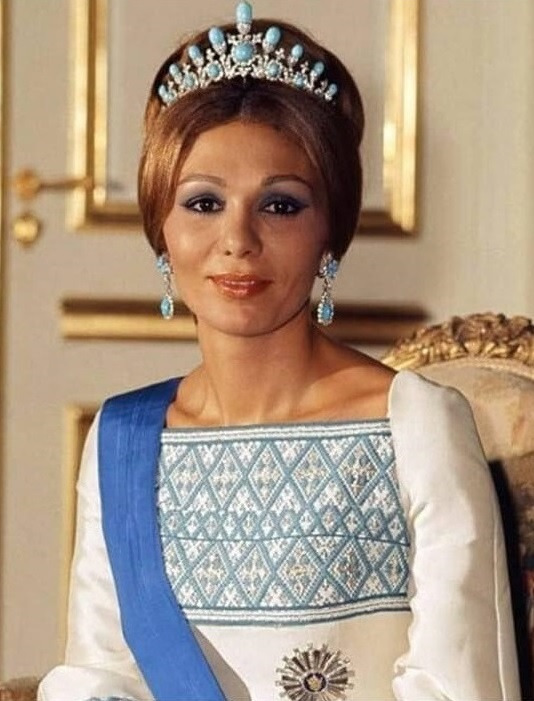
Asma al-Assad (Born 1975) (First Lady of Syria since 2000)

and Queen Rania of Jordan (Born 1970) (Ruled since 1999)
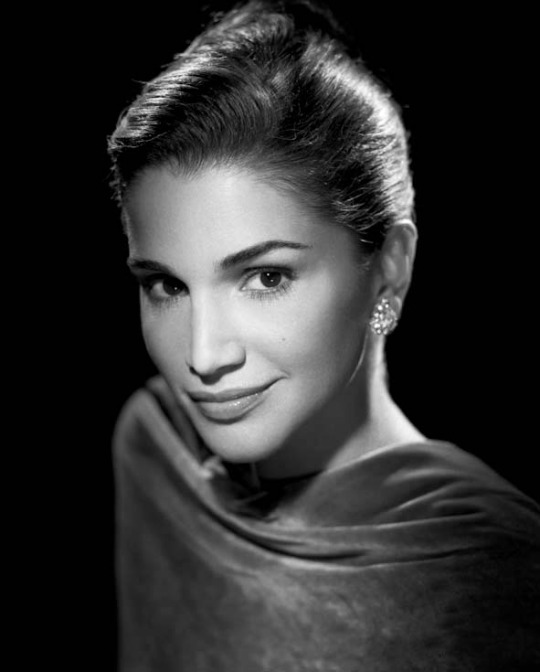
Are better representations of Progressive Islamic women than the Minnesota Congresswoman they’ve been trumpeting for months as “progressive.”

#Ilhan Omar#Queen Farah#Imperial Iran#Syrian Arab Republic#Kingdom of Afghanistan#minnesota#islamism#House of Pahlavi#Pahlavi dynasty#House of Mohammadzai#Hashemite Dynasty#Kingdom of Jordan#116th Congress
81 notes
·
View notes
Text

Queen Soraya of Afghanistan, was the first queen consort of Afghanistan as the wife of King Amanullah Khan. She fought for equal rights and education. Her family was forced to flee Afghanistan in 1929.
#soraya tarzi#queen of afghanistan#queen consort#badass woman#afghanistan history#afghan women#equal rights#education#afghanistan#historical figures#historical figure you can write about for an assignment
3 notes
·
View notes
Photo


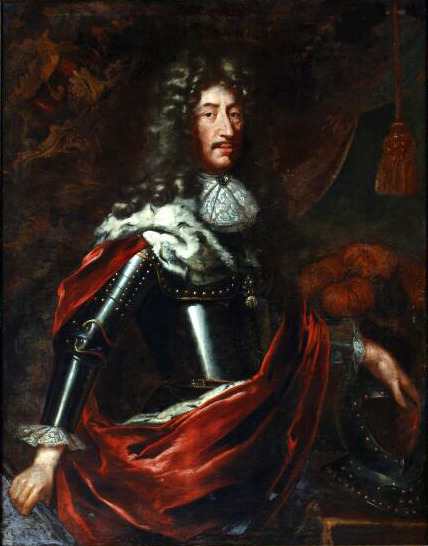



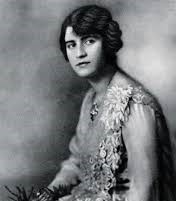


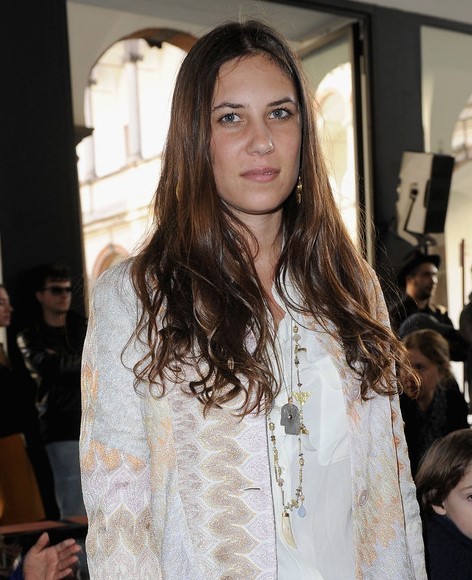
Royal Birthdays for today, November 24th:
Alphonso, Earl of Chester, 1273
Charles, Duke of Orléans, 1394
Philip William of Neuburg, Elector Palatine, 1615
Charles XI, King of Sweden, 1655
Maria Amalia of Saxony, Queen of Spain/Naples/Sicily, 1724
Maria Luisa of Spain, Holy Roman Empress, 1745
Soraya Tarzi, Queen of Afghanistan, 1899
Patricia Lascelles, Countess of Harewood, 1926
Isabelle, Princess of Liechtenstein, 1947
Tatiana Santo Domingo, Wife of Andrea Casiraghi, 1983
#tatiana santo domingo#princess isabelle#patricia lascelles#maria luisa of spain#soraya tarzi#maria amalia of saxony#charles xi#philip william of neuburg#prince alphonso#charles i#long live the queue#royal birthdays
25 notes
·
View notes
Photo
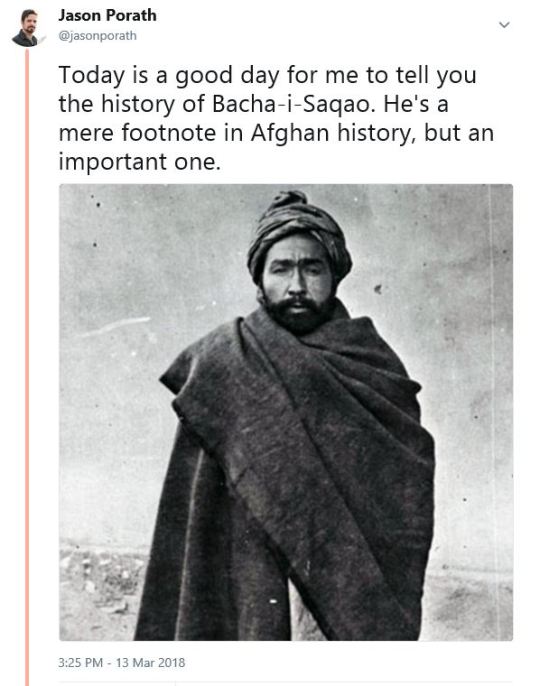
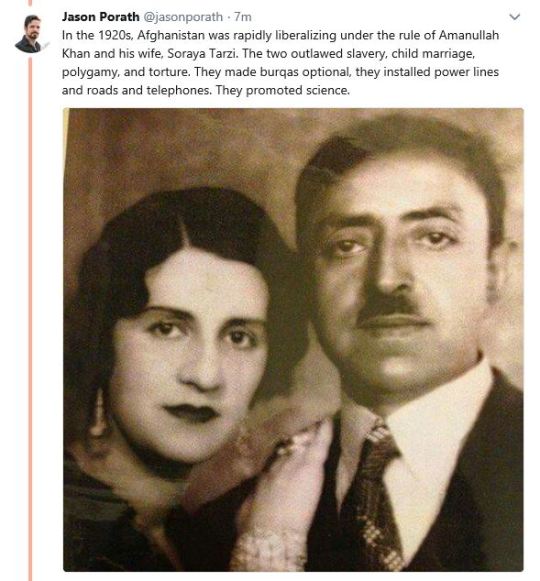


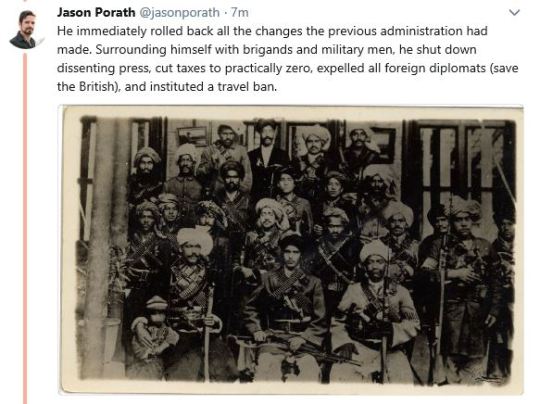


More on Soraya Tarzi and Amanullah Khan here.
3K notes
·
View notes
Text
50 Awesome Women To Know: Part 2
Part One is here!
Mary Somerville (1780-1872): Scottish, scientist, astronomer, and mathematician, tutor of Ada Lovelace, namesake of Somerville College, Oxford.
Matilda de Braose (1155-1210): French/Welsh, medieval warrior woman and noted opponent of King John, who famously had her starved to death, so outraging everyone that there’s a clause about it in Magna Carta.
Melba Roy Mouton (1929-1990): American, Assistant Chief of Research Programs at NASA’s Trajectory and Geodynamics Division; head of the African-American group of “computers” in which Katherine Johnson and others worked.
Melisende of Jerusalem (1105-1161): French-Armenian, queen of Jerusalem in the mid-12th century and a formidable political operator, part of a legacy of several medieval Queens of Jerusalem.
Mumtaz Mahal (1593-1631): Indian, beloved and influential empress consort of the Mughal emperor Shah Jahan, who built the Taj Mahal to honor her at her death.
Murasaki Shikibu (c.973-c.1030): Japanese, lady-in-waiting to the Empress Shoshi, author of what is considered the world’s first novel, The Tale of Genji.
Nadine Gordimer (1923-2014): South African, novelist and winner of the Nobel Prize in Literature, longtime anti-apartheid and HIV/AIDS activist.
Nzinga of Ndongo and Matamba (c.1583-1663): Angolan, African queen and highly successful resister of Portuguese colonialism. Brilliant diplomat, military tactician, and ruler.
Pauline Johnson (Tekahionwake) (1861-1913): Mohawk-English actress, performer, and poet, considered one of the early formative influences on Canadian literature.
Rukhmabai (1864-1955): Indian, physician, feminist, and social reformer, one of the first female doctors in colonial India, got the Age of Consent act passed after fighting her legal case as a child bride; lived until age 91.
Ruth Ellis (1899-2000): American, African-American LGBT activist, known as one of the oldest surviving lesbians, came out in 1915 (!).
Sara of Würtzburg et al (11th-15th centuries), German, French, Italian, Spanish, etc., the many medieval Jewish female doctors in Europe.
Sarah Biffen (1784-1850): English, Victorian artist born with no arms or legs, who could paint with her mouth and whose work was highly sought after.
Shirin Ebadi (1947 -- ): Iranian, lawyer, human rights activist, first Iranian and Muslim woman to receive the Nobel Peace Prize.
Soraya Tarzi (1899-1968): Afghani, the influential queen of the socially liberal kingdom of Afghanistan in the 1920s and responsible for many of its reforms, encouraging women’s rights and other efforts at modernization.
Stormé DeLarverie (1920-2014): American, mixed-race lesbian and drag performer whose arrest in 1969 started the Stonewall Riots. Known as the “Rosa Parks of the gay community.”
Sylvia Rivera (1951-2002): Latina American, another Stonewall personality, transgender and gay rights activist, sex worker and drag queen.
Tamar of Georgia (1160-1213): Georgian, known as “King Tamar” and “Tamar the Great” and the figurehead of the Georgian Golden Age. Known for her political and military success and her cultural sponsorship.
The Mirabal Sisters (d. 1960): Cuban, Patria, Minerva, Maria Teresa, and Dedé, who opposed the dictator Rafael Trujillo and worked as spies and saboteurs against him. Three were executed in 1960; the last died in 2014.
Theodora of Byzantium (c. 500-548): Greek, Byzantine empress, former sex worker, one of the most influential Eastern Roman empresses and a formidable political operator alongside her husband, Justinian.
Tomyris (c. 530 BC): Central Asian, a sort of Iranian-Scythian Boudicea who led her army against Cyrus the Great (and defeated him) in 530 BC, earning her the respect (and fear) of many classical writers.
Trota of Salerno (12th century): Italian, a renowned doctor and physician at the medical school of Salerno in Italy, lent her name to the Trotula, one of the most famous medieval medical handbooks for women.
Wu Zetian (624-705): Chinese, the only empress regnant in China for more than two thousand years. Political, military, and artistic leader.
Yaa Asantewaa (1840-1921): Ghanaian, queen mother of the Ashanti Empire, and leader of (at age 60) the War of the Golden Stool against British colonialism.
Zenobia (c. 240-after 274): Syrian, queen of the Palmyrene Empire, invader (and conqueror) of a good chunk of the Roman Empire, sponsor of intellectual and cultural figures at her court, national Syrian heroine.
71 notes
·
View notes
Photo

Queen Soraya Tarzi of Afghanistan during a trip to London, circa 1929 [1200x1226] #HistoryPorn https://ift.tt/2uY6mX4
8 notes
·
View notes
Text
LMAOOOO that persons blog has a post that’s like ✨soraya tarzi …… the queen of afghanistan✨ and the first picture is of mata hari
0 notes